Homemade meals show your love for your dog. Owners like controlling ingredients, especially after hearing about recalls. Our guide explains How to Balance Homemade Dog Food properly, with vet-approved recipes. These recipes ensure your dog gets a complete and balanced meal at home.
Getting the balance right is crucial for dogs. They need the right mix of protein, fat, carbs, fiber, vitamins, and minerals. For adult dogs, the minimum is 18% protein and 5.5% fat. Puppies need more—22.5% protein and 8.5% fat. Following these guidelines is key to a healthy homemade diet.
Vets emphasize the importance of supplements. For instance, MSPCA-Angell recipes call for Balance IT Canine. Founder’s Veterinary Clinic suggests adding specific supplements like calcium citrate and a multivitamin. Tools like Balance IT ensure your homemade meals meet all nutritional needs. These extra steps make homemade dog food safe for everyday feeding.
Don’t forget about calories. A small, 15-lb dog needs around 443 kcal daily. The MSPCA-Angell suggests serving about 300g of food per day. After cooking, weigh the food, add supplements thoroughly, and then adjust portions based on your dog’s weekly weight checks. Be sure to cook all food completely. Then, either serve it, store it in the fridge for 3-4 days, or freeze up to two months.
Many experts, including the AVMA, FDA, and CDC, warn against raw diets because of bacteria. We offer three tested recipes: an MSPCA-Angell daily meal plan, Founder’s Veterinary Clinic’s chicken and rice combo, and a Balance.it chicken, sweet potato, and spinach recipe. With these, you can confidently make nutritious, balanced meals for your dog at home.
Why Homemade Dog Food Is Trending and What Vets Want You to Know
More pet owners are choosing to cook at home for better control and clarity. They prefer straightforward ingredient lists and avoiding dog food recalls. Homemade vs commercial dog food shows advantages like fresher smells, adaptable recipes, and easier management of food sensitivities.
Control over ingredients and avoiding recalls
At home, owners pick lean meats, whole grains, and veggies they know. This lets them create specific meals for dogs with skin or stomach issues. It also helps react swiftly to dog food recalls. Following vet advice on homemade dog food allows for easy ingredient swaps, maintaining a balanced diet.
How homemade differs from cooking for humans
Dogs have unique nutritional needs, not just smaller portions of human food. They must get the right amounts of amino acids, fats, and minerals. Leftovers might create nutritional imbalances. Vets recommend careful weighing, mixing, and supplementing to maintain a complete diet. Homemade feeds must be well-planned with a vet’s help to be as good as commercial ones.
Cooking in batches and watching your budget are key. Homemade food can be cheaper than some commercial options but more expensive than kibble. The main benefit is control over ingredients, ideal for dogs with food sensitivities.
Who should reconsider home-cooking
Certain families might do better with commercial dog foods. Without time for precise meal prep and supplement buys, diet quality drops. Those interested in a raw diet should check advice from the AVMA, FDA Center for Veterinary Medicine, and CDC about bacteria risks.
Always start with a vet’s advice on homemade diets. This ensures the right weight, calorie intake, and recipe suitability. Regular weigh-ins, monitoring stool quality, and watching for any health issues are crucial. For picky eaters, rotating several complete recipes can keep them interested while ensuring a balanced diet during dog food recall periods.
Core Nutrition Basics for Dogs: Protein, Fat, Carbs, Fiber, Vitamins, Minerals
Starting with clear goals is key for balanced home cooking. AAFCO dog nutrition provides essential standards. Homemade meals need to match or beat these guidelines. Focus on the right amount of protein, fats for energy, digestible carbs, and fiber. Also, don’t forget a good balance of vitamins and minerals.
Protein roles and AAFCO minimums for adults and puppies
Protein is vital for muscles, skin, hair, and more. It also helps with hormones and antibodies. AAFCO sets minimum protein needs: 18% for grown dogs and 22.5% for pups. Use lean meats, eggs, or fish to meet these needs. Check the totals after cooking and weighing.
Fats for energy, palatability, and omega-3 benefits
Fats provide energy and make food yummy. They help in absorbing vitamins too. The minimums are 5.5% for adult dogs and 8.5% for puppies, says AAFCO. To improve skin and joints, add omega-3s. Use salmon oil, sardine oil, or algae oil. Make sure fat levels are consistent in every batch.
Carbohydrates and fiber for energy and GI health
Carbs aren’t required, but they offer steady energy. Options include rice, oats, and sweet potato. To help with digestion, add fiber. Keeping it between 2.5% and 4.5% is good. Use veggies like peas and green beans in small amounts.
Essential vitamins and minerals and risks of deficiency or excess
Vitamins and minerals are crucial even in tiny amounts. Getting too little or too much is bad. For the right balance, use dog-specific supplements. Follow recommendations from Balance IT or MSPCA-Angell closely. Matching AAFCO standards ensures homemade meals are nutritious and safe.
How to Balance Homemade Dog Food
Making homemade meals for dogs is fully possible. It requires clear goals, the right tools, and consistency. This guide explains the proportions, add-ins, calories, and preparation needed for balanced dog food, even in a busy kitchen.
Target macronutrient proportions used by veterinary sources
Vets often suggest aiming for at least 10% protein and 5.5% fat. They also recommend between 2.5–4.5% fiber and up to 50% carbohydrates. Once you add supplements, these figures can adjust to meet AAFCO guidelines. You can get protein from meats like chicken or fish. Carbs can come from pasta or potatoes, and peas or green beans often provide fiber. Oils add the necessary fats.
This guidance helps ensure each meal is balanced, providing sustained energy and easy digestion. Keeping portions consistent helps prevent sudden changes in a dog’s diet.
Why supplements like Balance IT Canine are not optional
Experts from facilities like MSPCA-Angell highlight the importance of the Balance IT Canine supplement. It fills in nutrition gaps. Veterinary guidelines also recommend adding calcium citrate, potassium chloride, oil blends, and daily vitamins. The Balance.it website offers plans that combine whole foods with these supplements.
Without these added nutrients, a homemade recipe might lack essentials. Integrating supplements into the entire batch ensures every serving is nutritious. This also prevents picky eating.
Calorie needs by life stage and activity level
Calories needed vary with a dog’s age, size, and activity. For instance, a 15-lb adult dog typically needs around 443 kcal daily. MSPCA’s feeding guide suggests around 1.51 kcal per gram, indicating near 300 grams of food per day. Start with a calorie calculator, then adjust the food amount by about 25% to keep your dog’s weight ideal.
Puppies, working, or highly active dogs require more protein and fats. It’s a good idea to monitor your dog’s weight and shape each week.
Cook, cool, weigh, and thoroughly mix to ensure consistency
Begin by cooking all meat, starches, and veggies well. After cooling them, measure out each ingredient by weight for precision. Thoroughly blending each batch with required supplements ensures every meal is the same.
To get the best quality: employ a kitchen scale and mixer. Then, portion the food into containers. You can keep it in the fridge for 3–4 days or freeze it for about two months. This method guarantees consistent nutrition in every meal.
Vet-Approved Recipe Frameworks You Can Trust
Home cooking for dogs is made easier with three trusted methods. They focus on making meals safe and precise. You cook, cool, weigh, blend in supplements, portion, and refrigerate. This method with vet-approved recipes reduces guesswork and keeps nutrients consistent.
The MSPCA Angell recipe is designed for dogs of different sizes. It uses cooked dark-meat chicken, white rice, veggies, vegetable oil, and a supplement. You mix the ingredients well after weighing. This routine helps keep dogs in great shape.
The Founder’s Veterinary Clinic diet is for a 20-pound dog. It includes chicken, brown rice, peas or carrots, oils, and essential supplements. You can swap in turkey, fish, or potatoes. But, the supplements are key for a complete diet.
For a customized plan, the Balance.it generator makes a mix for a 50-pound dog. It has chicken, oil, an omega-3 supplement, sweet potato, spinach, salt, and a Balance IT supplement. It ensures nutrients meet the dog’s needs in a consistent way.
Success in feeding depends on being precise and careful. Measure cooked food, mix thoroughly, split into daily servings, and refrigerate. These vet-approved recipes help maintain a solid feeding routine. They give a strong base for daily dog nutrition.
Recipe 1: MSPCA-Angell Complete Daily Diet Template
This MSPCA Angell dog food recipe is simple for owners to use at home. It lists cooked weights and portions clearly, making everyday meals easy. Always weigh the food after cooking for the best results.
Ingredients and portions for a 15-lb adult dog
To feed a 15 lb dog each day, give about 300 g, or 443 kcal. You’ll need: 80 g dark-meat chicken, 190 g white rice, and 15 g mixed veggies. Also, add 5–10 g vegetable oil and 6 g Balance IT Canine. Mix everything well so it’s even.
Scaling and weekly weigh-ins to maintain ideal body condition
Change food amounts based on the dog’s size and activity. For example, a 30-lb dog might eat 4.5 oz chicken, 2 cups rice, and more. A 60-lb dog could need 8 oz chicken and even more vegetables and rice. Adjust food by about ±25% as needed. Remember to weigh your dog every week.
Preparation steps: cook, weigh, blend, and store safely
First, cook the chicken, rice, and veggies fully and let them cool. Accurately weigh the food to match this recipe. Then, mix the chicken, rice, veggies, oil, and supplement well. For a smooth mix, use a food processor. This helps avoid picky eating. Keep the mix in the fridge for 3–4 days or freeze for up to 2 months.
Why the Balance IT supplement is required
The Balance IT Canine in this recipe is essential. It adds important vitamins, minerals, and amino acids. Missing it means the food won’t meet your dog’s nutritional needs. Mixing well makes sure every bite is nutritious for a proper diet.
Recipe 2: Founder’s Veterinary Clinic Balanced Chicken and Rice
This dog recipe from Founder’s Veterinary Clinic makes home cooking simple. It balances nutrients for a 20 lb dog’s diet that includes chicken and rice. Plus, it adds elements that boost bones, muscles, and electrolytes. It’s also easy to prepare in large batches. And, you can safely swap some ingredients if you need to.
Ingredient list for a 20-lb dog with allowed substitutions
Each day, you’ll need 1/4 lb of cooked, skinless chicken and 1 cup of cooked brown rice. Add 1/2–1 cup of peas and carrots, and mix in 1 tbsp of vegetable oil, like Udo’s Oil 3-6-9 Blend. Together, these ingredients support a healthy energy level and lean body for your dog.
You can switch the chicken for boned fish, lean turkey, beef, or lamb. And instead of rice, use potatoes, yams, or pasta. These changes can add variety or help with your budget. But, remember, the vitamins and minerals you add should stay the same.
Required add-ins: oils, calcium citrate, potassium chloride, multivitamin
Add 1/4 tsp of potassium chloride for electrolytes, as advised in dog food guides. Also, include 250 mg of calcium citrate to keep the diet balanced. And don’t forget a daily vitamin and mineral supplement. You can use one made for dogs or 1/4 of an adult human dose.
Remember to include 1 tbsp of oil. This ensures your dog gets the essential fatty acids they need. The recipe’s success depends on these extra nutrients for a well-rounded diet.
Batching, dividing daily portions, and refrigeration
Cook the chicken, rice, and veggies until they’re tender. Let the mix cool, then weigh it out. Add the oil, calcium, potassium, and vitamins. Mix well so the supplements are spread out evenly.
This will give you a day’s worth of food for a 20 lb dog. Make it in the morning, split it into meals, and keep it in the fridge. It will last 3–4 days cold or about 2 months frozen. Try not to freeze it for more than 6 months.
If you need more or less food, just change the amounts. For a 10 lb dog, use half the recipe. For a 40 lb dog, double it. Keep an eye on your dog’s weight and adjust the food as their exercise changes. This is important, even with different food swaps.
Recipe 3: Dietitian-Generated Balance.it Chicken, Sweet Potato, and Greens
This recipe is made for daily feeding and meets nutritional goals. It is perfect for a 50 lb dog’s homemade diet. The process is simple: cook, cool, weigh, and mix. This ensures each meal is as good as the last.
Portions designed for a 50-lb adult dog
Every day, you’ll need 13 7/8 oz of cooked, skinless, boneless chicken breast. Include 1 1/2 cups of cooked sweet potato (flesh only) and 3/4 cup of boiled spinach. Make sure not to add any skin, salt, or seasonings.
Add 5 1/4 tsp of canola oil for extra energy and taste. This matches the needs of a 50 lb dog. When divided into two or three meals, it helps maintain a steady weight.
Incorporating omega-3s, iodized salt, and Balance IT
Mix in 1 3/10 mL of Nordic Naturals omega-3 for important EPA and DHA. Add 11/16 tsp of Morton iodized salt to meet iodine requirements. Complete the meal with 5 tsp of Balance IT Canine for essential vitamins and minerals.
It’s crucial to accurately measure the Balance IT Canine dosage. Make sure to cook, cool, and weigh all ingredients properly. Mix well to ensure uniformity and nutritional consistency in each serving.
Why tool-generated recipes help ensure completeness
A tool-supported plan makes nutrition reliable. The Balance.it recipe uses a specialized tool to ensure no vital nutrient like iodine or omega-3s is overlooked. It also helps measure the perfect amount of Balance IT Canine, so your dog gets just what they need.
Prepare the day’s food in one batch, then divide it for each meal. Store it in the fridge until it’s time to eat. By checking your dog’s weight weekly, you can adjust servings as needed. This keeps them healthy without altering the basic recipe.
Safety, Prep, and Storage: From Kitchen Hygiene to Portioning
When making homemade meals, safety is key. Make sure hands, boards, and knives are clean. This helps maintain top-notch kitchen hygiene for dog food. Always cook, cool, weigh, and portion correctly. This ensures each meal is fresh and consistent for your pet.
Food safety and why most vets discourage raw diets
Many vets caution against raw diets because of dangers like Salmonella and E. coli. This comes from groups like the AVMA, FDA Center for Veterinary Medicine, and the CDC. They worry about risks to both pets and humans. Make sure to cook all meat, carbs, and veggies well. Then, cool them before mixing to keep pathogens away.
Equipment checklist: food scale, processor, containers
A precise food scale is a must for dog recipes. It helps you measure cooked food accurately. Use a food processor or a clean grinder to blend textures. This stops dogs from picking only their favorite bits. Also, have sturdy cooking gear and sealable containers or freezer bags ready for tidy, labeled storage.
Refrigeration and freezing timelines for freshness
Keep prepared food in the fridge for up to four days. For longer keeping, freeze it in meal-sized portions. Try to use these frozen packs within two months for the best taste. Avoid using any food stored for over six months. When swapping foods, start with smaller amounts to see how your dog adjusts.
Ingredients to avoid for dogs and common substitutions
Stay away from foods that are toxic to dogs. This includes chocolate, macadamia nuts, grapes, raisins, xylitol, onions, garlic, and chives. Don’t use cooked bones unless they’re ground, and avoid raw ones too. Instead, go for safe options like chicken, turkey, beef, lamb, rabbit, or tofu. Pair these with dog-friendly carbs like rice or sweet potato. Add oils like olive or safflower and veggies for fiber.
Keep track of your pet’s health with weekly checks and notes. Watch their appetite and how their stools look. Adjust food amounts when needed. Always talk to your vet about any allergies, stomach issues, or other health concerns.
Conclusion
Making homemade dog food means focusing on one main idea: good nutrition needs planning. Stick to recipes backed by vets and use the right measurements and supplements. This helps you hit the right amounts of protein, fat, fiber, and carbs for your dog’s health. Ideas from MSPCA-Angell, Founder’s Veterinary Clinic, and Balance.it can guide you.
How you prepare the food is as vital as what’s in it. Cook, chill, and weigh your dog’s food for correct serving sizes. Mix everything well to avoid selective eating. Keep it fresh by storing it in the fridge for up to 4 days or freeze it for 2 months. Using a food scale and processor will help maintain the right texture and calorie count.
Always consult a vet before changing your dog’s diet. They can guide you on the ideal weight and calorie intake for your pet. To keep on track, weigh your dog every week. Adjust their food by 25% based on their weight changes. And it’s best to steer clear of raw diets to lower the risk of foodborne illnesses, as recommended by the AVMA, FDA, and CDC.
With the right plan, weighing your ingredients, and adding necessary supplements, cooking at home is both safe and fulfilling. Follow reliable guides, mark your calendar for cooking days, and keep in touch with your vet. These steps, along with regular weight checks, ensure your dog gets the nutrition they need. You’ll also have complete control over what goes into their meals.


























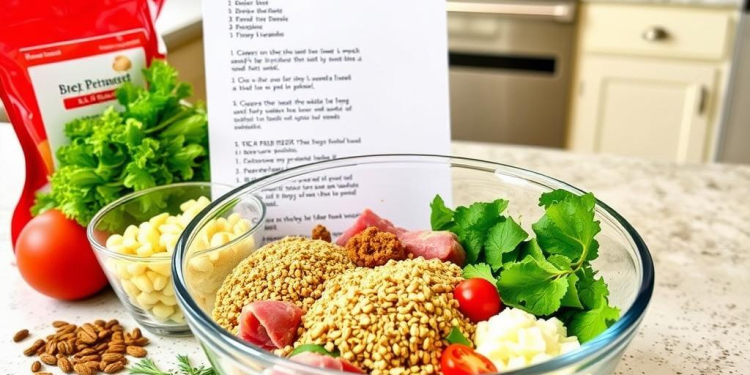







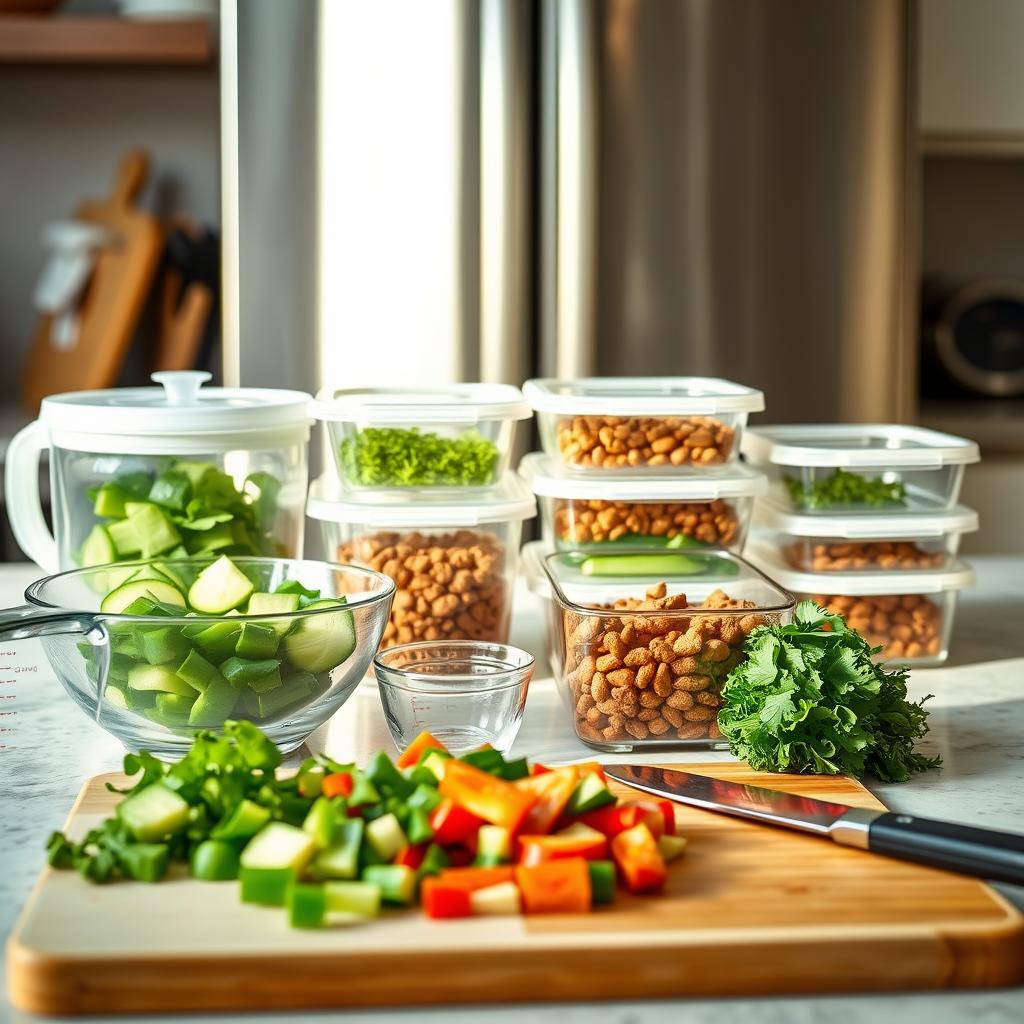

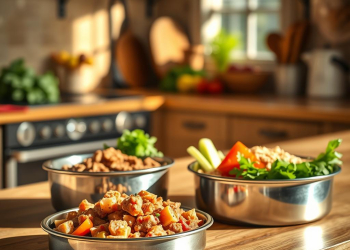
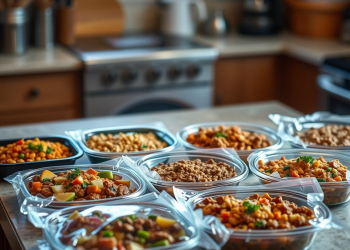

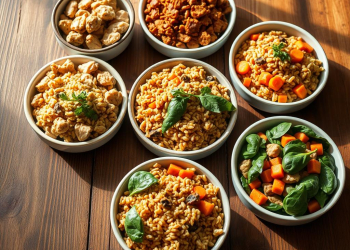











Discussion about this post